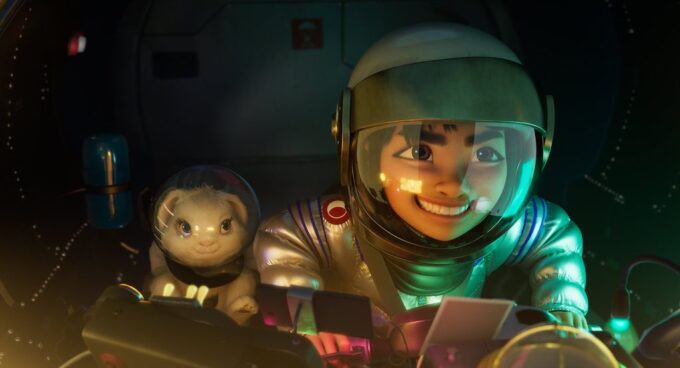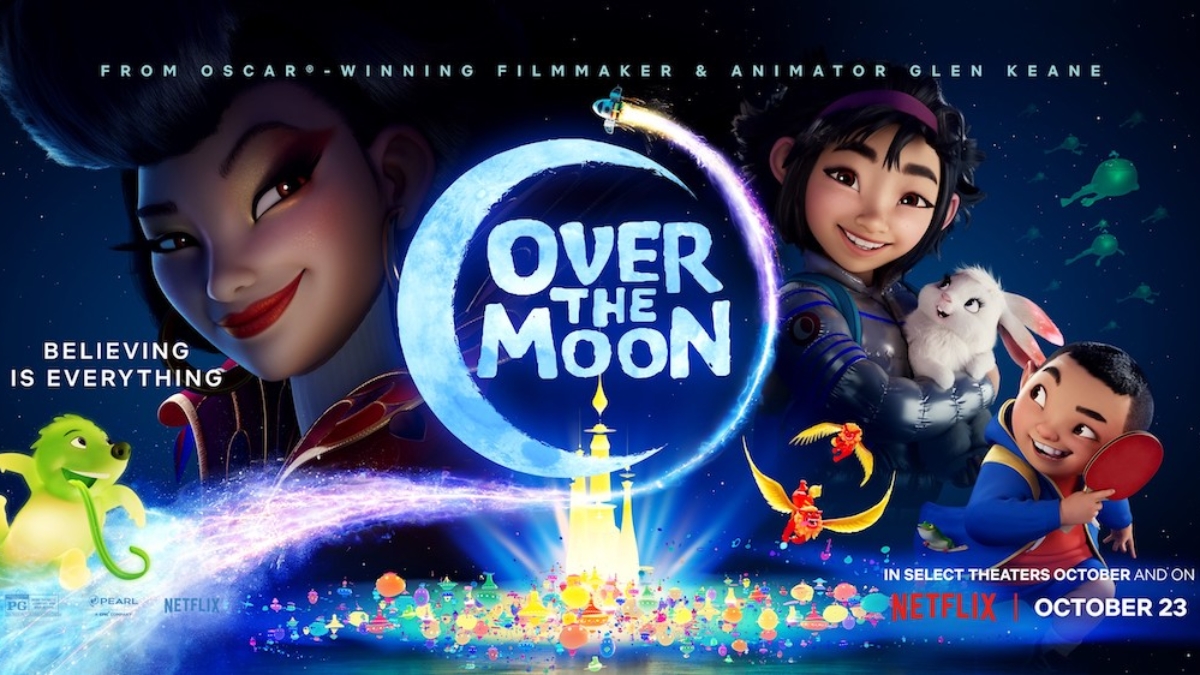Written By: Kano Umezaki
This article may contain spoilers
Mothers ago, stories were spoken about the Chinese goddess, Chang’e (嫦娥), who swallowed an immortality pill and rose to the moon, leaving her mortal lover behind. Fei Fei, the young Chinese protagonist in Netflix’s Oscar-nominated film, “Over the Moon” (2020), feels drawn to this celestial lore, carried and passed down by her mother.
Directed by Glen Keane –– who was a previous character animator for “Beauty and the Beast” (1991), “The Little Mermaid” (1989) and “Aladdin” (1992) –– “Over the Moon” draws affinities to Disney musical classics. As a Netflix original made in collaboration with Chinese company, Pearl Studio, and featuring an all-Asian cast –– Cathy Yang, Philippia Soo, Robert G. Chiu, Sandra Oh, Margaret Cho –– the film has been celebrated for its accuracy to Chinese culture. But as with any introspective conversation surrounding identity, debates have circulated about the Anglification of the film, with Chang’e being rendered as a diva rather than conventionally elegant; and with the film taking place in a small Chinese village rendered through a touristic gaze.
The Asian diaspora has always grappled with our cultural “authenticity” or lack-there-of; but conversations about cultural “authenticity” often rely on forced belongings to designated borders, and feel performative when constantly catered to an essentialized way of being. Instead of matters of “authenticity,” I want to explore acts of cultural preservation in the film, specifically through the power of matriarchal storytelling as both a subservient and powerful force in shaping collective memory.
With the barriers of literacy, oral traditions allow for otherwise overwritten histories and myths to persist. As the film opens with the cosmos, we hear Fei Fei’s mother speak of the space dog (Tiangou 天狗) who bites the moon into eclipsed phases. When Fei Fei’s father asks if anyone wants to hear the “scientific” explanation of the moon, Fei Fei responds: “Sorry, I like Mommy’s explanation best.” From this exchange, we see Fei Fei reject “civilized” explanations of the world, which rely on reducing the scale of wonder to a fixed truth. Instead, Fei Fei turns to her mother’s stories as a way of animating the world with creative power.
Four years after Fei Fei’s mother passes from a sickness, Fei Fei continues to hold onto matriarchal myths as a way of bridging the mortal divide. She clings onto her gifted Chang’e doll, turning her mother’s spirit into a presence she can hold. She sees mooncakes as embodying her mother’s memories. She believes in a faithful and eternal love, like with Chang’e and her mortal lover, Hou Yi. Fei Fei’s affection for all things related to the Chinese moon goddess shows how matriarchal storytelling is embodied in the way it lingers. Myths aren’t mere “stories” for Fei Fei, but ways of holding on. Because unlike the written, speech is seen, heard, touched; they are tied to a body and its life. They become living memory.
Once her father introduces her to a new woman (his soon-to-be wife), Fei Fei feels betrayed by his disloyalty. Rather impulsively, Fei Fei decides to fly to the moon and meet the Chinese goddess, Chang’e, to prove her existence to her father. Only then, does Fei Fei believe, will her father remember her mother, and their commitment to each other be renewed. With dire persistence, Fei Fei builds a series of rocket test launches, eventually succeeding after incorporating electromagnetic properties; a feat which tackles patriarchal gender stereotypes about women in STEM.
The film’s fixation on Chinese folklore transforms the rules of reality with a gravity-defying rocket launch to the moon, Chinese goddess-turned pop star, jock chicks on motorcycles, and massive leaping frogs. The supernatural elements reflect Fei Fei’s expansive relationship with the cosmos, with her imagination bordering on the bizarre. But the outlandish scenes on the moon creates a vast emotional rift with the grounded scenes on Earth.

When paced correctly, elements of the mundane and the whimsical can set fertile ground for coming-of-age films, such as in Hayao Miyazki’s “Spirited Away” (2001), but these two elements clash with contrived efforts in “Over the Moon.” After Fei Fei arrives on the moon –– with her make-shift rocket, pet bunny and stow-away stepbrother, Chin –– the plot quickly turns to formless ends. With a rushed command in style, pacing and world-building, the introduced themes of loss and grief soon become distracted by ungrounded fantasies.
Though hastily paced, the animation gives way to a flourishing cosmic ecosystem. As we later understand, the Lunar Kingdom, Lunaria, is an external manifestation of Chang’e’s emotions. When she’s angry, meteor showers fall across the moon. When sad, all light in Lunaria vanishes. When content, light persists in the cityscape, glowing in neon yellows and greens. With the environment embodying emotions, we are able to see and feel how Fei Fei’s mythical adventure serves as an internal, spiritual journey, as much as it does an external, material one.
With conviction, Fei Fei eventually learns to let go. She arrives home without the physical belongings her mother gifted her, as she realizes that love doesn’t mean holding on. With inherited matriarchal myths –– which have led her to adventure and spiritual awakenings –– Fei Fei realizes she’s been gifted with a secondhand memory: familial love. A type of love that isn’t held in the hands or the heart, through permanence and possession; but in the way you carry and pass it on.
Because beyond what’s spoken, Asian communities speak through what’s not explicitly said. Fei Fei and her family never say they love each other, but it’s implied in all the subtle ways. The way Fei Fei gently places a mooncake on her mother’s altar, along with a plucked pink blossom. The way Nǎi Nai (grandmother) feeds Fei Fei a bite of tofu, then asks if she’s been properly fed. The way Bà Ba (father) tells her daughter to be careful on her bike, as she rides across town to deliver mooncakes. The way Fei Fei turns back the lazy susan, so Yé Ye (grandfather) can reach his boiled crab. The ways in which Asian communities language love are held in these sensitive portraits of life. And this, too, is a way of storytelling; because even if not spoken, our love gets articulated through all that we choose to give.
Matriarchal storytelling is a living relationship, and an embodied one too. As Fei Fei’s mother shows, storytellers carry living memories of a community. Because a story told is a story circulated, storytellers are the true waterways of the past. So one day, when Fei Fei chooses to speak of the Chinese goddess of the moon, she will also be speaking from the place of her mother, and her mother, and her mother, and so on. Like the phases of the moon, life and death are eclipses of a grander story; a grander living memory.
“Over the Moon” is available to stream on Netflix.

